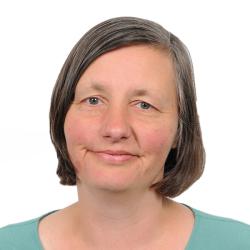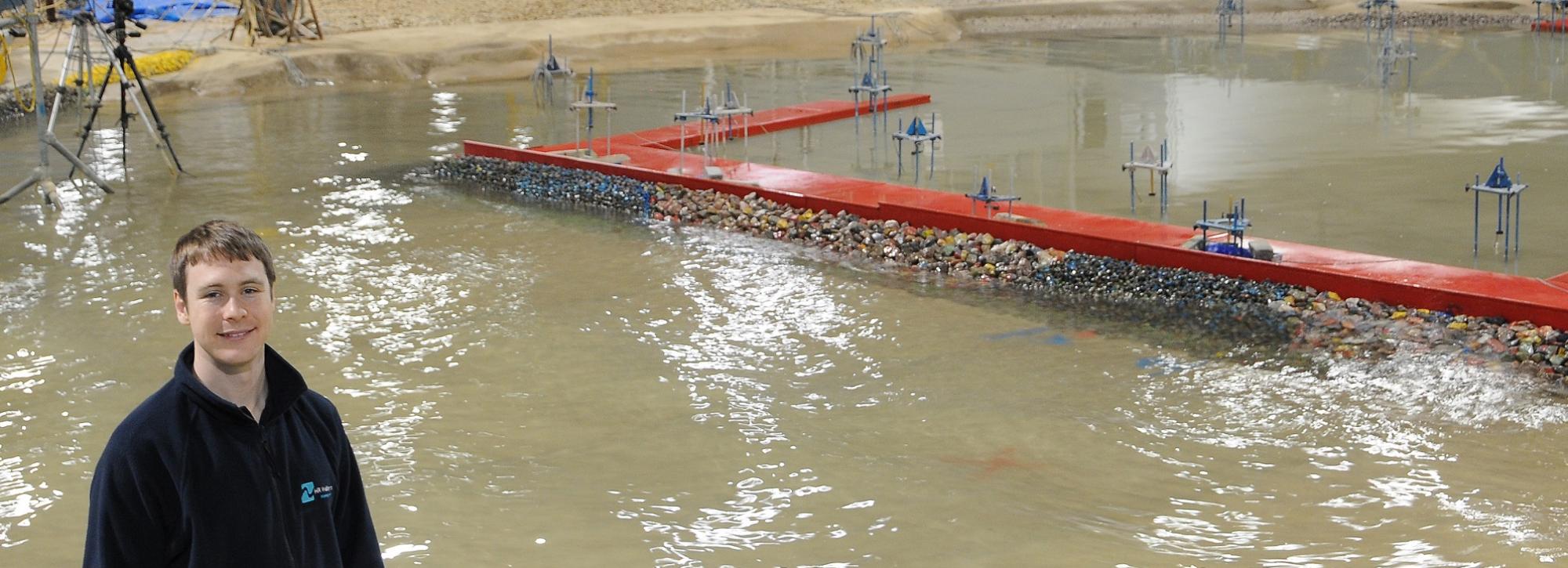
The curious case of a combined physical model
When building a physical model in our labs, it’s tempting to think that it could be used for more than one sort of study. In this article, Senior Engineer Dr Ian Chandler explores when models can be combined, and explains why this is not always the best option to ensure accurate results and speed.
There are four main types of model that our clients are sometimes interested in combining in our labs: coastal, ship, hydraulic and sediment models. Occasionally, for specific projects, we have been able to combine some of these, but we advise against it when this can be detrimental to the accuracy of the results. This is because different types of scale physical models require different scaling relationships, use different assumptions, and require different approaches to their design and implementation. When looking at combined models, these requirements may be in direct conflict with each other, and it is vital to use the right parameters for the study to avoid scale and model effects and provide the best results.
For coastal models – breakwaters, seawall and revetments – our clients are primarily interested in measuring the overtopping of the structure, the stability of, and forces on, the structure, and occasionally wave agitation within a harbour. Ship model studies focus on vessel motion and the forces exerted on mooring lines and fenders. Hydraulic models are used to investigate flow through a structure such as a pumping station, drop shaft or intake. Sediment modelling focuses on reproducing the erosion and deposition of mobile beds, for example around bridge piers or offshore structures such as wind turbine foundations.
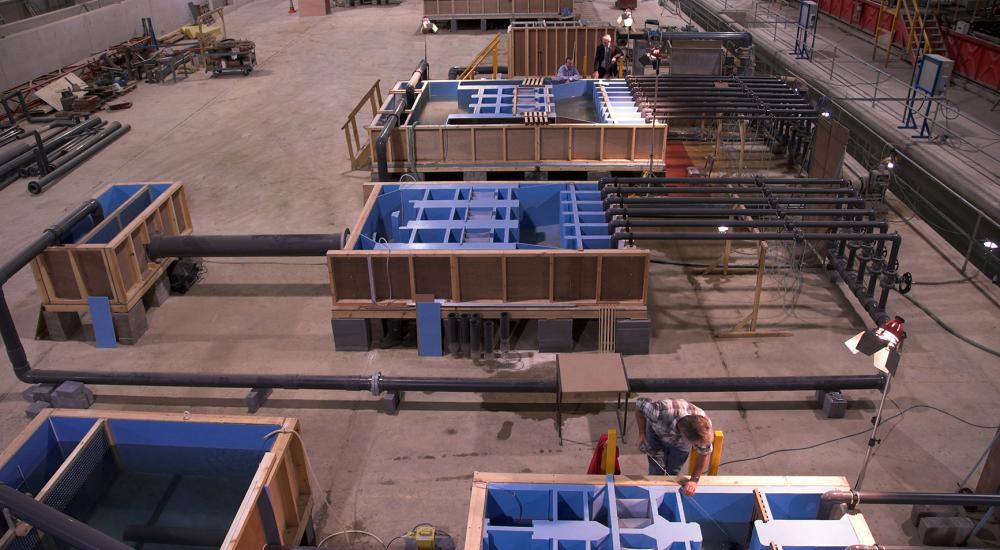
To combine coastal and ship modelling (which was successfully undertaken for the Aberdeen Harbour Expansion, the harbour must be small enough to model the necessary extent of breakwaters, adjoining coastline and wave directions required for the ship modelling, at a large enough scale for the coastal model. 3D coastal models usually require a minimum scale of 1:60 – and this was used for the Aberdeen project – but larger is preferable. This is to avoid scale effects that will often make the model overly conservative in terms of armour stability and other factors, provide sufficient room for instrumentation such as pressure transducers to measure forces, and allow sufficient volumes (at model scale) of overtopping for accurate measurement.
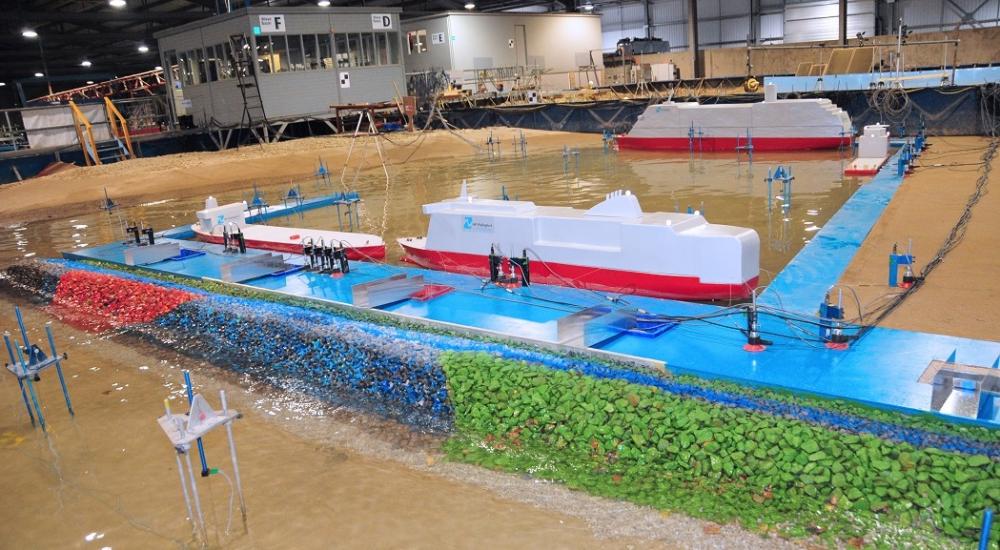
Coastal models generally use long crested waves (with each wave crest stretching all the way across the model) and focus on design and overload conditions with return periods of 1:100 years or greater. Ship models are often around a scale of 1:50 to 100 in order to fit the required extent of the model within the available test area. As well as the model scale being dictated by the need to model the extent of the harbour and surrounding areas, the capability of the wavemakers to generate the shortest wave period required by the study is a key consideration when setting the scale. Ship model studies often use short crested wave conditions (waves come from different directions within a defined sector and interact with each other) and focus on operational conditions with low return periods (10:1 through to 1:5 years), while also considering the generation of second order waves to ensure harbour resonance is modelled accurately.
These different scales for different model types mean that careful consideration of scale effects and other aspects of modelling are needed when considering combining the multiple types into a single model. For instance, while it may be possible to use a single model to test both coastal structures and ship motion, the tests cannot be run at the same time because they require different return periods and wave types – short and long crested. The tests would therefore have to be run one after the one. The alternative is to have two (or more) separate models so that we can run them at the same time in different facilities, potentially providing our clients with results sooner than could be obtained using a single combined model.
Combining other types of model brings similar challenges. Depending on the type of sediment model required (gravel, sand, or cohesive material), sediment models can be combined successfully with coastal models, for example looking at shore protection structures. The same issues of different required scales and model designs come into play but the use of lightweight alternative materials, such as anthracite coal as the beach material, can overcome many of these. As an example, we recently completed a 3D coastal model of Colwyn Bay, which was used to calculate the evolution of the beach profile for various beach re-charge schemes, as well as providing overtopping measurements at the promenade. For sediment models focusing on detailed scour measurements around structures, such as wind turbine foundations, the preferred scale is 1:25 which makes combining with 3D coastal models difficult, even in HR Wallingford’s largest 75m long basin.
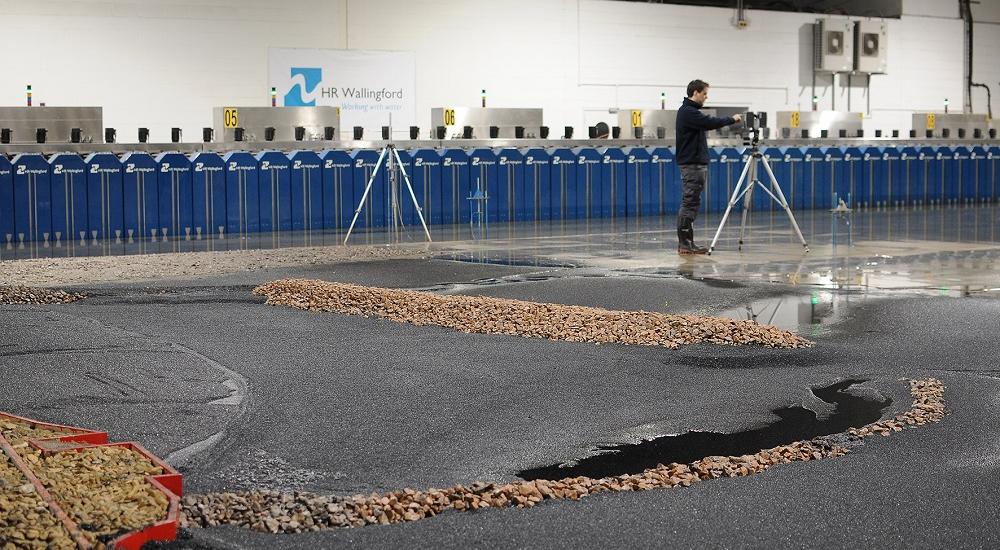
For hydraulic models, turbulence levels within the flow are critically important while less so for coastal or ship models. This introduces different scaling relationships that must be satisfied and can result in a scaling conflict in relation to the geometric size of aspects of the model (distorted scale) to allow flows to pass correctly. Combining hydraulic models with other types of modelling could significantly affect other parameters that are being assessed.
In summary, we can and we do combine different types of scale model but it is not always the optimum solution to provide high quality results. Using separate models allows greater confidence in the results produced through maximising the scale offered and can often provide clients with results quicker than combined models are able to. Where models can be combined, such as for the Aberdeen Harbour Expansion, this can lead to cost savings that can be passed on to our clients, and we raise and discuss these options with the client and move forward using combined models when desirable.
Want to know more?
